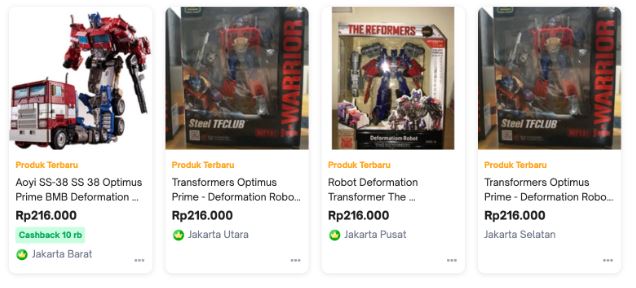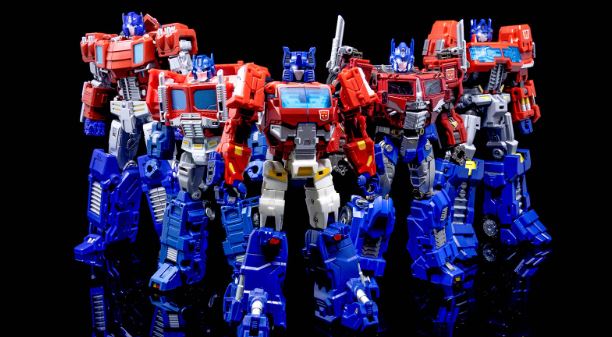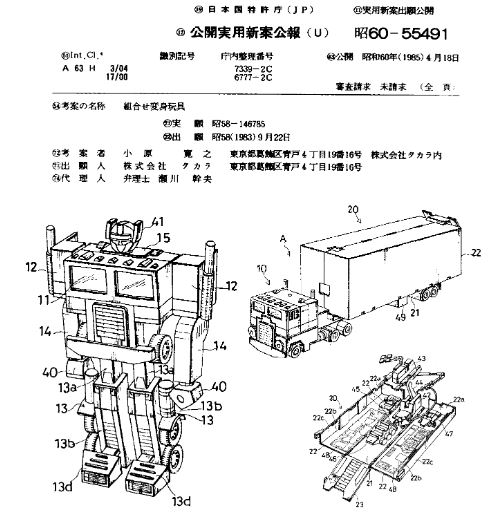The toy industry is one of the most promising businesses for IP businesses. Of the total circulation of money, which has reached USD 107.4 billion in 2022 alone, more than 80% is Intellectual Property (IP) based toys. The best sellers were toys from IP Barbie, Disney Princess, Marvel, Star Wars, Pokemon, Minecraft, and Harry Potter.
Because basically, the buyers of these toys are not only children but also adults who collect various action figures (toy characters that can be posed because they have multiple points of articulation) and statues (toy characters that are large without articulation but have super accurate details), worth hundreds of dollar.
The large community of toy fans and collectors, with different purchasing power from a popular character, overwhelms toy manufacturers in presenting various toys that are in demand. This potential is then filled by other toy manufacturers, ranging from cheaper versions of toys to those with different designs that are not officially licensed.
Bootleg Toys

At first glance, it looks like the original product, but for fans, from the packaging, it can be seen that the toys above are pirated with lower quality than the originals. Source: Screenshot from one of the e-commerce in Indonesia
Because they have official partnerships with IP owners, big toy manufacturers such as Hasbro, Bandai, Mattel, and LEGO must maintain quality by presenting products that match the original characters’ appearance— from the suitability of the color to the packaging with the official logo. With maintained quality, the selling price of these original toys is costly. But on the other hand, we can also find toys with low prices, of course with a low level of accuracy, messy paint, no official logo, and the name of the company that made it needs to be clarified.
That criterion is what is referred to as a bootleg or pirated toy. Because it is clear that its presence does not go through an official collaboration process, paying for a license, nor is there a Quality Control (QC) process that should be present to maintain the quality of an IP. Unfortunately, there is also a high interest in pirated toys, especially from low-budget collectors or collectors who deliberately buy toys to modify, repaint, or use some of the parts to replace the original toys.
Third-Party Toys

Optimus Prime from the Transformers series in various versions of designs from different toy manufacturers. Source: Mecha Catalogue
As previously explained, each popular IP character has huge fans with high purchasing power. The characters Batman, Spider-Man, Iron Man, Darth Vader, Optimus Prime, and Kamen Rider are examples of popular characters whose fans always buy a new version of the toys. Seeing their enormous purchasing power, a third category of toy manufacturers emerged: toy manufacturers who make toys based on a character but with a different design, never before made by other toy companies but still attractive to the fans. These are what fans classify as “third-party” toys.
While true fans can feel guilty when they buy pirated toys, that’s not the case when they buy “third-party” toys. Because they think buying toys with new variants which have never been produced before by design is acceptable. These “third-party” toy manufacturers also do not pay royalties to IP owners. This is indicated by the absence of official logos and character names on the packaging of “third-party” toys.
Industrial Design Rights on Toys
Several types of Intellectual Property are attached to a toy, namely Industrial Designs, Trademarks, and Copyrights. If the Copyright protects the packaging design, while the Mark protects the IP name and its characters, then the Industrial Design protects the core product.
According to Law Number 31 of 2000 concerning Industrial Design in Indonesia, the definition of Industrial Design is a creation of the shape, configuration, or composition of lines or colors, or lines and colors, or a combination thereof in a three-dimensional or two-dimensional form which gives an aesthetic impression and can be embodied in three-dimensional or two-dimensional patterns and can be used to produce a product, goods, industrial commodities or handicrafts.

Industrial Design Document for a toy truck that transforms into a robot, designed by Hiroyuki Obara for the toy company Takara, Japan (1983), whose character we later know as Optimus Prime. Source: Japan Patent Office
In producing a toy, these toy manufacturers usually buy a license for a character from the IP owner, then make an attractive design and register it as an Industrial Design. However, this Industrial Design only has a protection period of 10 (ten) years from the application date and cannot be extended. This is what makes toy manufacturers have to keep creating and keep making new variants so they can continue to get the maximum benefit from the characters that have been licensed before losing the exclusive rights to the designs they made ten years later.
Penalties for Industrial Design Violators
From the explanation above, it can be concluded that pirated toy manufacturers who make similar toys with the same design but lower quality have violated Industrial Design. Because according to Article 9 of the Industrial Design Law in Indonesia, “Holders of Industrial Design Rights have the exclusive right to exercise their Industrial Design Rights and to prohibit other people without their consent from making, using, selling, importing, exporting, and/or distributing goods that are given Industrial Design Rights.”
Then Article 54 of the Industrial Design Law provides for a maximum imprisonment of 4 (four) years and/or a maximum fine of Rp 300,000,000.00 (three hundred million rupiahs) for violations of Article 9 above.
Then what about “third-party” toy manufacturers? Do they not commit any violations?
Because Industrial Designs are specific according to the designs registered, “third-party” toy manufacturers may be able to escape the legal snares stipulated in the Industrial Design Law. Still, they cannot run the Copyright Law and/or Trademark Law because it is not impossible that the toy manufacturer still uses a similar name on the packaging and character design which still has similarities in principle to the character whose copyright has been recorded at the Intellectual Property Office.
Therefore, if we are true fans who support the development of our favorite IPs, we must start leaving the habit of buying toys from manufacturers who do not pay royalties because there are still forms of violation there. On the other hand, if you are interested in getting into the toy industry, it is better to start by establishing official partnerships with IP owners.
If you need further information about Industrial Design protection or license agreements in Indonesia or abroad, please don’t hesitate to contact us via [email protected].








1 Comment